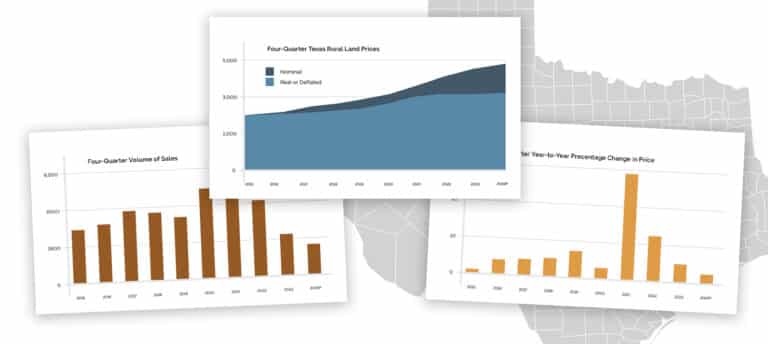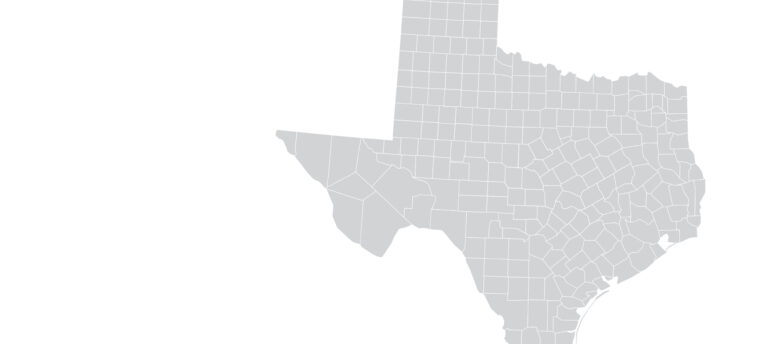Values associated with wildlife are significant and diverse. It’s been estimated that the economic impact of hunting and fishing in Texas contributes over $3.3 billion annually to our state’s economy. Additionally, people not only simply value wildlife from a monetized standpoint, but also in other contexts, as well. These other diverse values of wildlife may include recreational, aesthetic, spiritual, emotional, and ecological values. Thus, attention to providing requisites for enhanced wildlife habitability is not only good for wildlife, but it’s good for society. Since much of Texas is often described as an arid to semi-arid environment, there exists plenty of opportunities through creative, financial, and sweat equities to invest in water as a means of providing a better home for wild creatures and for people.
Water as a nutrient
When discussing nutrients as part of the wildlife management conversation, it seems that there tends to be more gravitation toward discussing supplemental feeding and forage management, with water being an afterthought in many of these discussions. Protein pellets and food plots tend to be sexier than the colorless, tasteless, and odorless properties of water. However, make no mistake, when it comes to servicing the diverse function of the living body, water reigns king. Water is intricately involved with transport of other nutrients, oxygen, and waste into and out of the cells. It contains several necessary electrolytes, it is critical in the digestive process, and even acts as a cushioning component for joints, spinal cord, and brain. Though water has no calories, it does serve as a medium for chemical reactions that are part of our normally bodily processes including the metabolic reactions involved in energy production. So, when discussing strategies for growing bigger deer, more quail, and creating greater wildlife diversity for backyard pleasure, it may be wise to move water to the front of the discussion line.
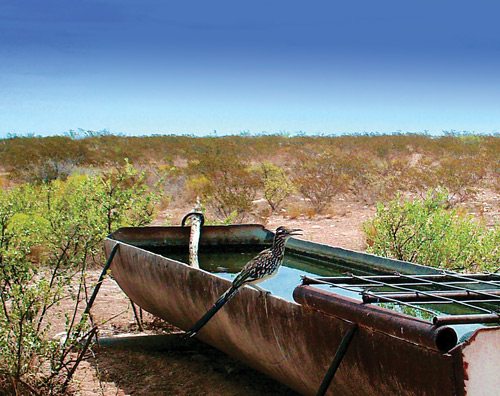
Sources and catchments
When we think of how water ends up on our landscape, many people tend to think of that which falls from the sky. Indeed, the moisture that we receive from our atmosphere is necessary for our planet’s survival, and when you look across the lands of Texas, the water that you see in the form of dirt tanks, lakes, rivers, and potholes, is almost exclusively the result of rainfall. But let’s be reminded that there are some locales where soil types are simply not conducive for holding water, as the porosity may be too great. And as already mentioned, many areas of the state have long stretches in-between rainfall events, creating an environment where evaporation, percolation, and water usage simply exceeds what is captured from rainwater run-off. There are ways to manage around some of this shortfall, such as lining dirt tanks with bentonite clay or even using artificial liners, but droughts can still create problems when we are strictly relying on rainwater in arid regions.
Have your own wildlife business-related question? Ask Greg here!
The other primary source for creating available surface water for the benefit of wildlife (and livestock), is by pumping it from the depths of the earth to the surface of the land, and then distributing it and making it available through drinking devices. The primary options for pumping groundwater to the surface is either through windmills or submersible pumps. Once pulled to the surface of ground, the now available water is often stored in an artificial tank, and is then delivered to a trough or drinker. Troughs are typically in the form of cement, plastic, or metal containers. Large properties will often feature extensive pipeline infrastructure where miles of pipelines are laid, generally through PVC, or these days, through polyethylene pipe, which is more durable than traditional PVC.
Guzzlers are another option for providing wildlife water in arid regions or locales where groundwater is not available. The guzzler concept is typically based on having an apron which increasing the collection area from rainwater, and the apron will funnel into a storage container that is fully enclosed to reduce evaporation, and is then fed through a pipe into a small drinker. Guzzlers have been especially popularized through some of the desert bighorn restoration projects in Texas and elsewhere.
Distribution counts
Since water can be a weak link in the habitability matrix for a variety of wildlife, one of the fundamental premises is that increased distribution of water allows for increased useable space for those localized populations of wildlife. Thus, there is enhanced efficiency it making use of all habitat features across the landscape by bridging this distribution of use through water provisions. Increased water distribution address fragmented characteristics of habitat, minimizing “island-affects” and helping to transform patchy habitat characteristics into larger livable space for those populations of wildlife living in those areas. In addition to increasing wildlife population numbers through improved water distribution, these same populations tend to also be more stable with greater resilience to various environmental pressures.
 Don’t forget the small critters
Don’t forget the small critters
Accessibility to surface water is sometimes an overlooked feature when water troughs are implemented. The limiter for accessibility is generally created through too much distance from the top of the trough to the surface of the water. Fawns, birds, small mammals, and even reptiles are sold short when they cannot access the water. This accessibility issue can be easily mitigated by stacking large rocks at one end of the trough, or using expanded metal that is shaped like inverted V and provides a sloping platform for crawling up from the ground and down to the water’s edge, or even wiring a log to the side of the trough; anything creates a perch for accessing the water. Overflows are also great ways to create wildlife-friendly watering locations.
Water and tax consequences
Passed in 1995, Proposition 11 allows Texas private landowners to qualify for their 1-d-1 Open Space Ag Valuation through a provision of wildlife management use. Part of the requirements of this ad valorem tax valuation is an approved wildlife management plan that includes at least 3 of the 7 designated wildlife management practices, including water development. Thus, another important feature of private landowners actively implementing water improvements for wildlife, is that this investment may be applied toward a wildlife valuation, should the landowner choose to go that route. The central appraisal district (CAD) within each county can provide more details, or you can consult a private consultant, such as Wildlife Consultants, LLC.
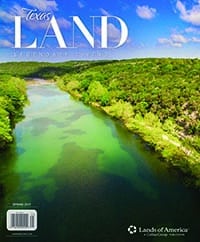
To seek consultation on various wildlife and hunting related matters, contact Greg Simons or Ruben Cantu at (325)655-0877 or go to www.thewildlifeconsultants.com.

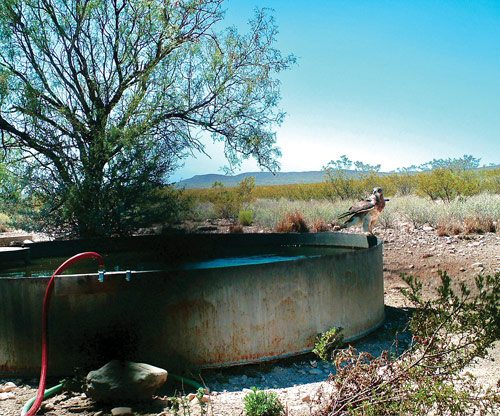 Don’t forget the small critters
Don’t forget the small critters